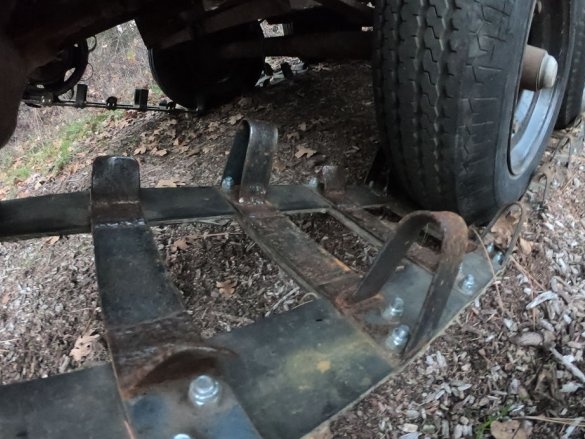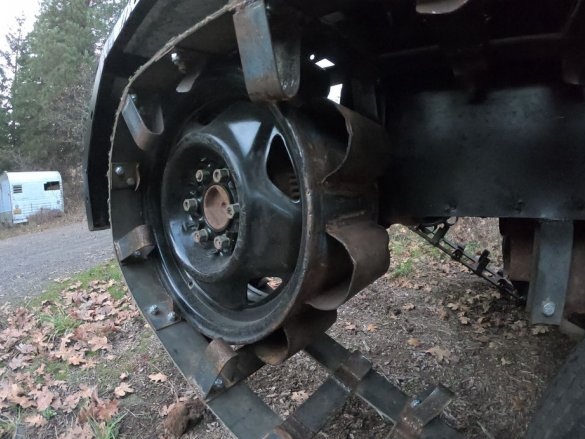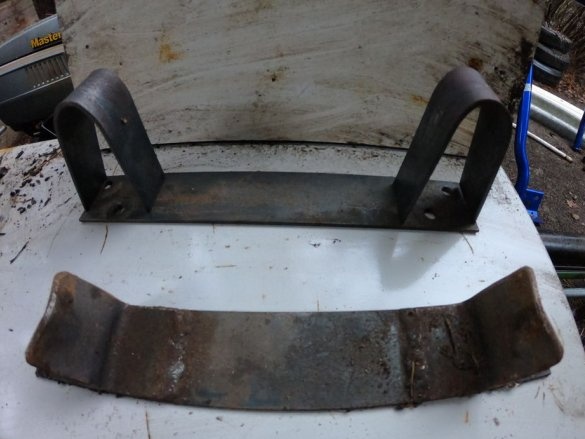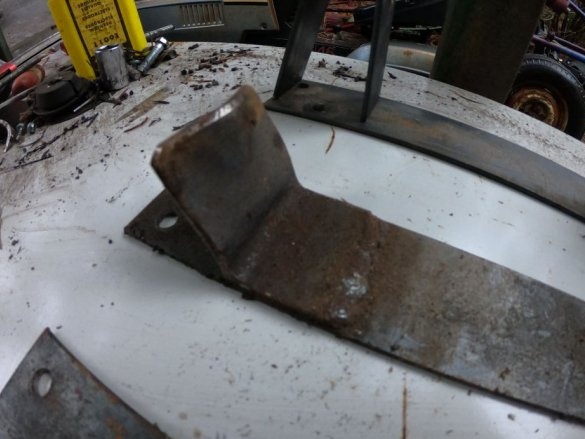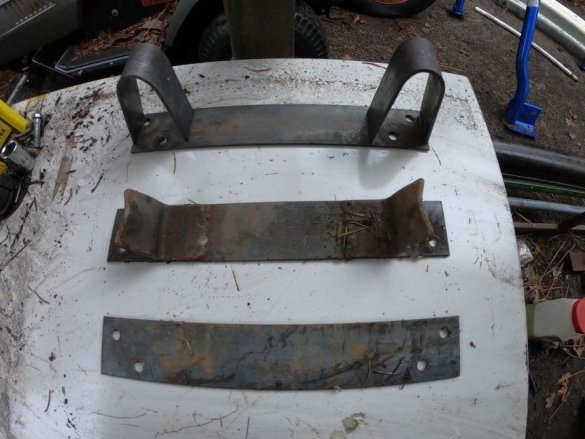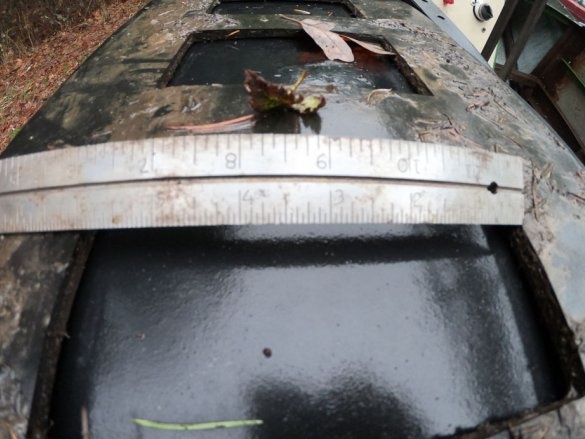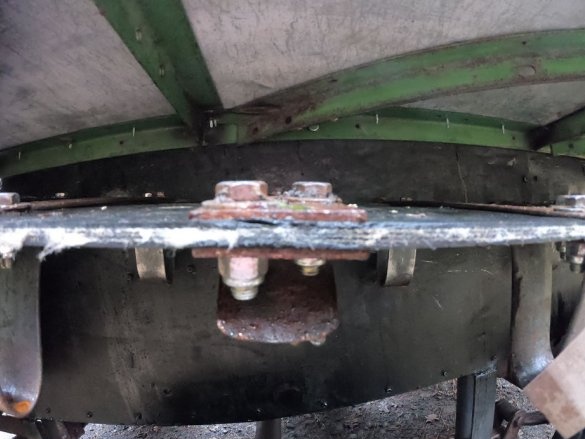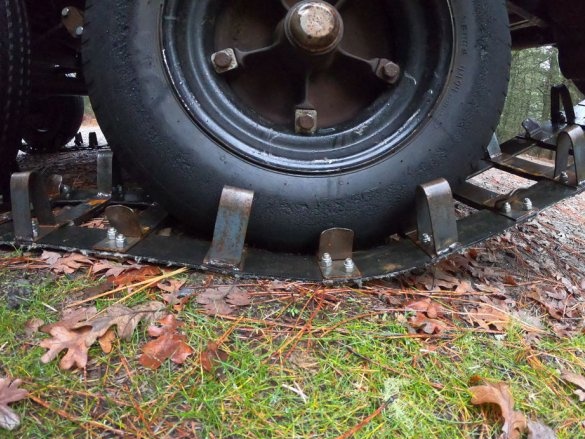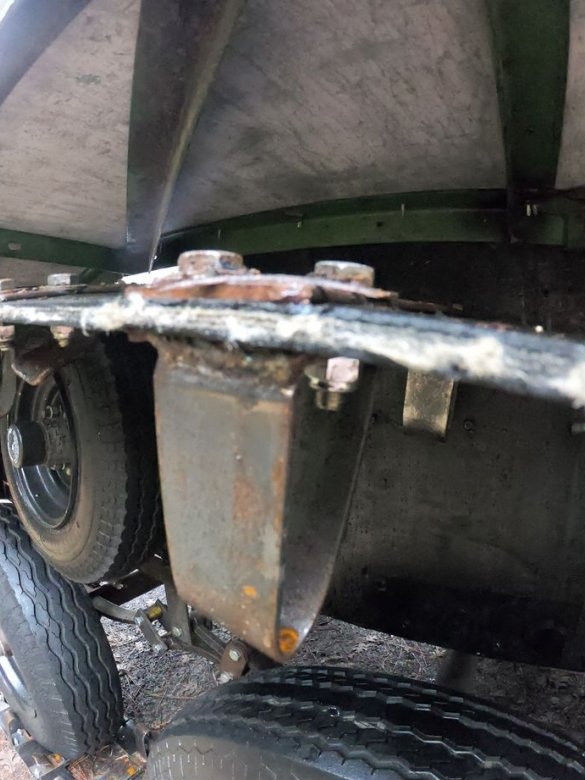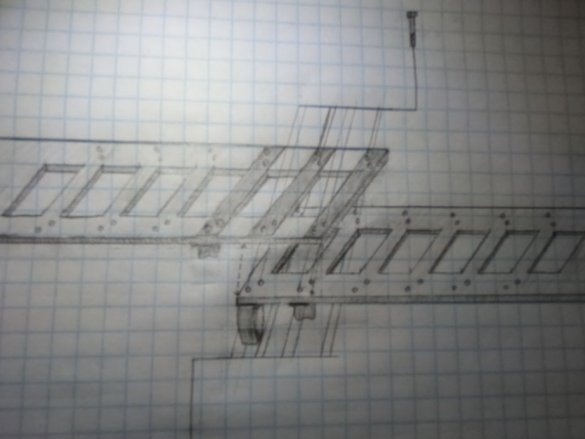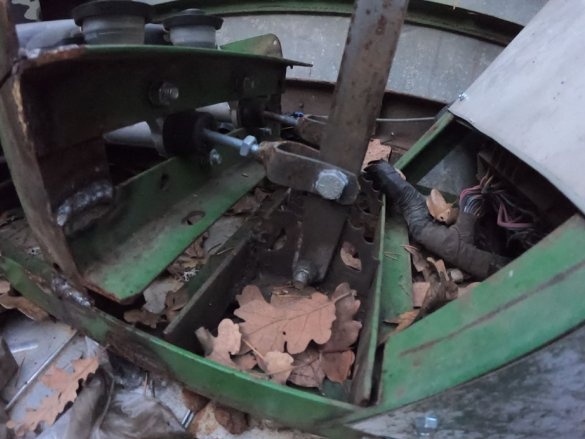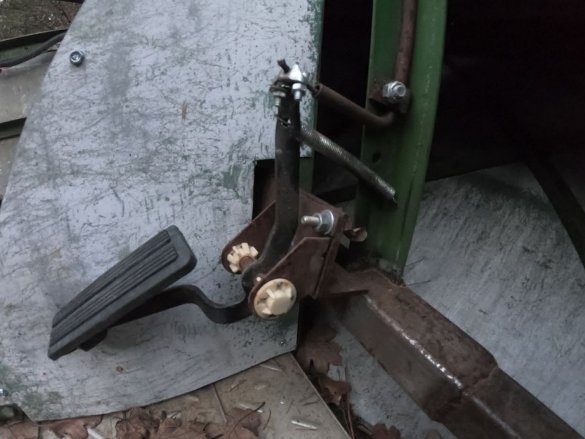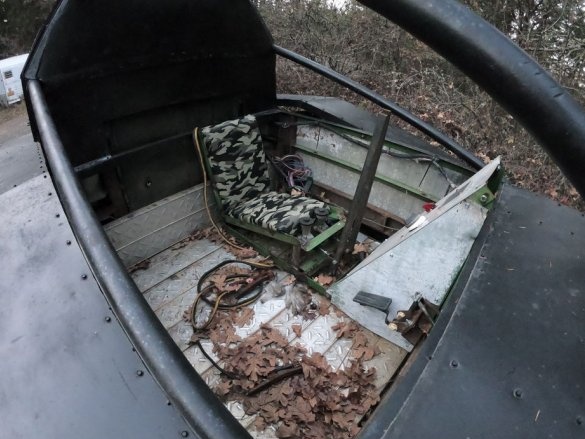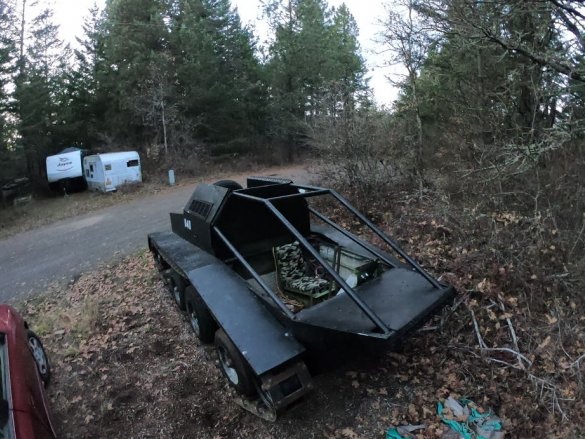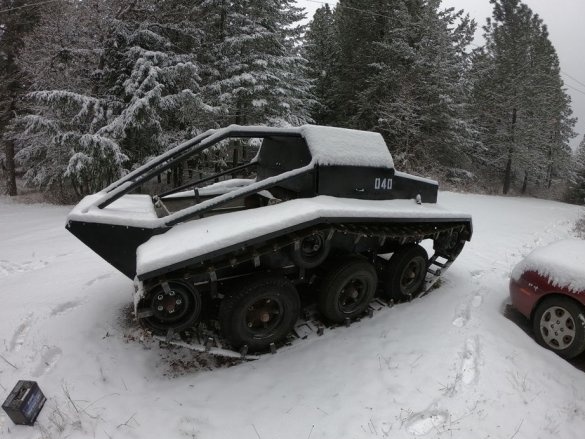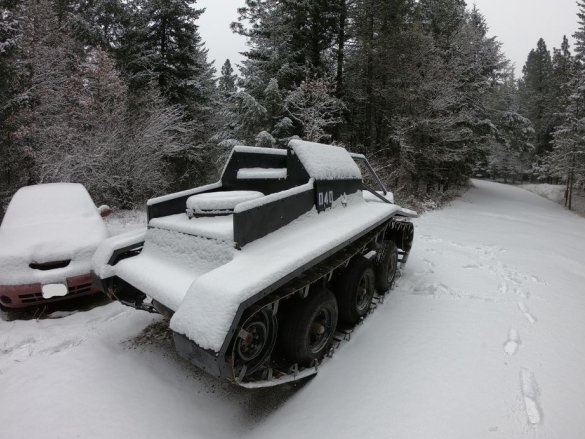This homemade tracked all-terrain vehicle, built almost entirely from scrap metal and secondary parts. The entire project, from collecting parts to final processing and painting, took the master about a year. The master calls his product "Tank", but he has several other names ... For example, "Frankentank", "Tankenstein" and "potential garbage" .-))))
The master did not make plans, projects, etc. Everything was invented and done in the course of work. The article does not provide drawings and detailed instructions, only the general concept and direction, and at the end of the article a video with the machine running.
Tools and materials:
-USHM;
-Welding machine;
-Drilling machine;
- Cordless drill;
-A screwdriver;
-Scissors for metal;
-Circular Saw;
- Car keys, heads, etc .;
-Materials optional;
Step One: Caterpillars
Caterpillars are certainly the main feature of this car, and they are also the most time-consuming part. They are made of two strips of conveyor belt connected by metal links. The master made the links himself. Guides are installed along the edges of the links that prevent the track from slipping. Front and rear of the all-terrain vehicle in limbo are stamped car wheels. Teeth are welded on one disc. These wheels are on the drive axle. The system is pulled using the wheel mounted on the top. Wheel on a sloth from the cart on which the boats are transported.
Step Two: Transmission and Frame
3.9-liter V6 engine, transmission and frame - from the 1992 Dodge Dakota. The location of the engine in the middle helps to balance the whole structure. The master made a body of sheet metal, pipe, channel.
Step Three: Controls
The main difference that needed to be eliminated between the operation of the old truck and all-terrain vehiclewas a difference in steering techniques. Tracked vehicles use a type of steering called differential steering. This means that the tracks will move at different speeds when cornering.
The base truck has rear-wheel drive and gearbox. The differential is open (or free). The differential works in conjunction with the gearbox to evenly distribute the transmission speed between the two wheels. This is a necessary function for a standard turn in a regular 4-wheel car. You can use this function for steering without changes, because when using a hand brake to slow down one side of the differential, the difference in speed is transmitted to the other side. Thus, braking the left side will lead to a left turn, and vice versa. This means that the right and left drive wheels in turns rotate at different speeds. Those. it is quite possible to slow down one side and the all-terrain vehicle will turn.
All you need to do is install two master cylinders in the cab, one for each drive wheel and connect them to the brake pipes.
The master installed the cylinders under the seat. Two levers are suitable for the cylinders, the left brakes the left side, the right - the right.
As a clutch cylinder, the master uses the 1992 Toyota 4-Runner brake master cylinder. The master removed the gear lever. In the future, he is going to install a servo drive there under the control of Arduino and shift gears remotely. In the meantime, the all-terrain vehicle is at one predetermined speed.
For the throttle, a pedal was installed and from it a cable to the throttle.
Step Four: Body
The master did the body shape, focusing on the fastest tracked vehicle in the world, according to the master, under the name “Ripsaw”.
The body was made of all kinds of metal trash, beams, corners, sheet metal, trailer flooring for transporting livestock.
Some body parts are welded, some are mounted on rivets or bolts.
The master’s page says, “I am a child with big dreams ..... I like the art of creating things from things ..... I believe that if you want it, you CAN build it. If you are inventive enough, nothing can stop you. "
As we see his words do not differ from the deed.
For those who are interested in this homemade I advise you to watch the video. If you do not speak English, then enable subtitles in Russian. In the video, the master explains in more detail some of the subtleties in the manufacture of an all-terrain vehicle.


